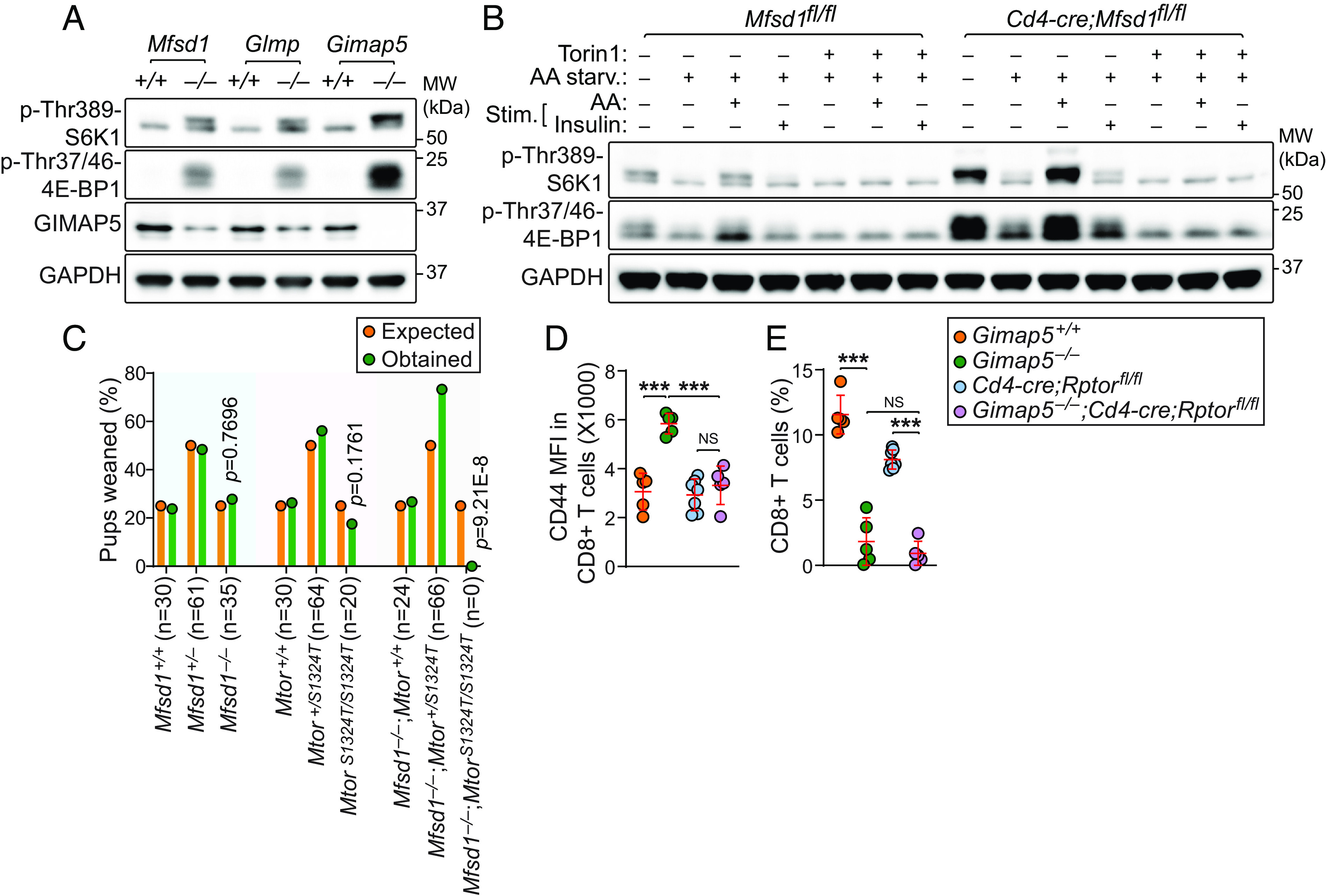Fig. 4.

Cell-intrinsic mTOR activation is associated with reduced GIMAP5 expression in MFSD1- or GLMP-deficient T cells. (A) Steady-state mTORC1 kinase activity analyzed by the phosphorylation status of S6K1 at threonine 398 (p-Thr389-S6K1) and 4E-BP1 at threonine 37/46 (p-Thr37/46-4E-BP1) in splenic CD8+ T cells isolated from 10-wk-old Mfsd1−/−, Glmp−/−, Gimap5−/−, or wild-type littermates. Endogenous GIMAP5 levels were also measured. (B) Immunoblot analysis of p-Thr389-S6K1 and p-Thr37/46-4E-BP1 in splenic CD8+ T cells isolated from 10-wk-old Cd4-cre;Mfsd1fl/fl or Mfsd1fl/fl littermates. Cells were grown in amino acid (AA) free RPMI-1640 medium containing 10% dialyzed fetal bovine serum (FBS) for 2 h in the presence or absence of the mTOR inhibitor Torin 1 (250 nM) and then stimulated with AA (mTORC1) or insulin (mTORC2) for 30 min. (C) Offspring from crosses of Mtor mutant mice on a wild-type or MFSD1-deficient background. A χ2 test with the appropriate degrees of freedom was used to calculate P values. (D and E) Surface CD44 expression (D) and frequency (E) of peripheral blood CD8+ T cells from 10-wk-old mice with indicated genotype (n = 5 to 7 mice/genotype). Data are representative of two (D and E) or three independent experiments (A and B). P values were determined by Chi-square test (C) or one-way ANOVA with Dunnett’s multiple comparisons (D and E). Each symbol represents an individual mouse (D and E). Error bars indicate SD. ***P < 0.001; NS, not significant with P > 0.05.
